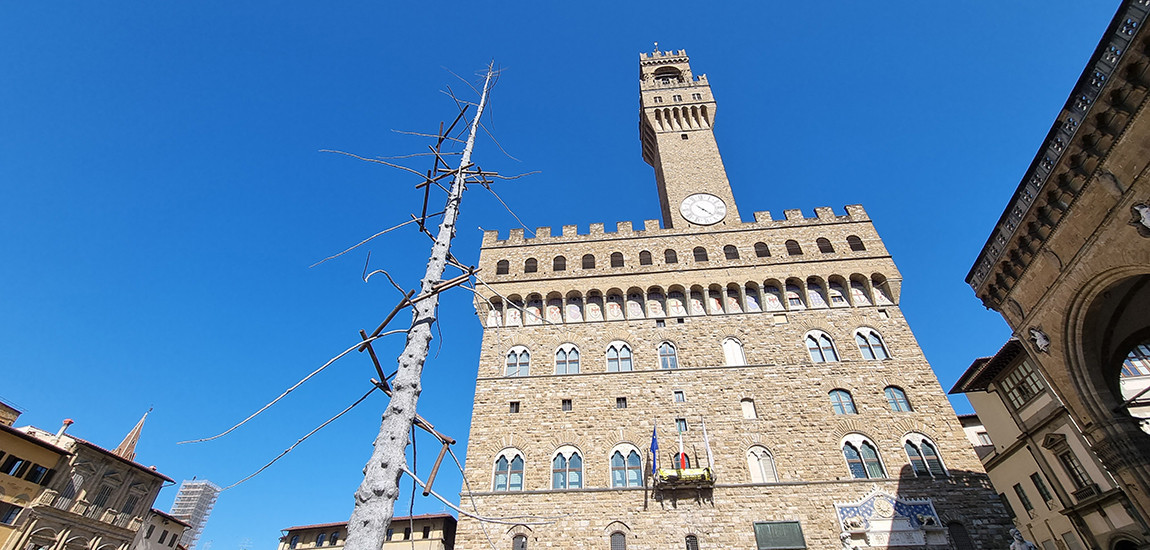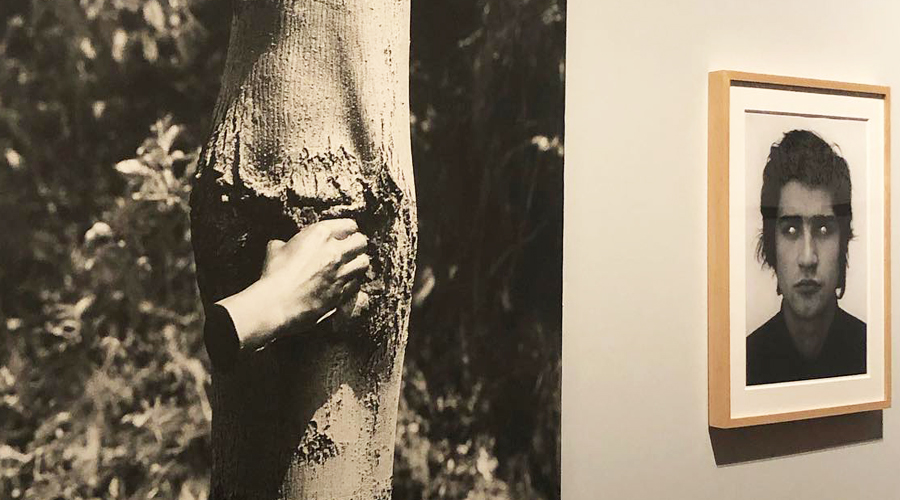
The Trees in verse by Giuseppe Penone at the Uffizi Gallery and in Piazza della Signoria
The monumental installation by Giuseppe Penone entitled Abete, which has been in Piazza della Signoria since March, has already been talked about. A majestic tree, over 22 meter high, in steel and bronze.
The installation of it in the square was only the preview of the
artist's exhibition that is being held at the Uffizi from 6 July to 3 October.
The exhibition, entitled Alberi in versi (Trees in verse),
pays homage to the Supreme Poet on the 700th anniversary of his death and is
inspired by the symbolism of Dante's verses "L’albero che vive della cima" (“the tree that takes life from
the top”. Dante, Paradiso, 18: 28-30). Dante compares the tree to Paradise,
which receives life from the top, that is, from above instead of the roots,
therefore from God. He’s thus alluding to an encounter between the earthly and
the divine, between the corporeal and the conceptual world, the matter that is
formed from the idea
In fact, Giuseppe Penone works mainly on matter, especially on wood. The tree is living matter, in the making, but Penone manages to freeze it in time with his metal installation. With another work, Continuerà a crescere tranne che in quel punto (It will continue to grow except in that spot. 1968-1978), on display inside the Gallery, succedes in modifying the growth of the plant. For this, the bronze cast of the artist's hand was installed on the trunk of a still young tree and left to hold it in a vice that over time has shaped its form.
Perhaps his most poetic work, which reflects on the theme of the
relationship man-nature, and on the traces that the former can leave behind in
the world.
Penone's art is strongly based on the idea of a contact that
generates memory and change, on the modification of matter, on the dialectic
between natural and artificial, and following this concept, the artist makes large
use of casts and imprints.

On display we find works from the late sixties such as Rovesciare gli occhi (Reversing your eyes. 1970), in which the artist photographs himself wearing mirror lenses, a blind gaze that however reflects the surrounding world; but also recent works such as Persone e Anni (People and Years. 2020), displayed here for the first time: a 15-meter frottage made by rubbing leaves on linen cloth leaning against a tree trunk. In parallel to the "written" trace left from the bark of the tree on the canvas, a text written by the hand of the artist himself.
From the "skin" of the tree reproduced on linen canvas, we move on to a work again linked to the epidermis, using an element that nature has created to perforate it: Spine d'acacia (Acacia thorns. 2006-2014), a surface covered with thorns as if to form a large map or imprint.
Another game of solids and voids, of signs left by man on nature, can be found in a work of 1979, Soffio di foglie (Blowing of leaves), where Penone records his presence on a heap of boxwood leaves, leaving the imprint of his body and the trace of his breath. A "negative" that dialogues perfectly with the "positive" of the body of the Hermaphrodite at the center of the room.
More than thirty works of contemporary art including sculptures,
installations, drawings and engravings, which - investigating the inside and
outside, the positive and negative, human and plant, art and nature - meet and
mingle with the artworks of the Uffizi Gallery, the new and the ancient in
dialogue with each other.
"Penone's art invites a
philosophical reflection on the nature of Time." explains the director
of the Uffizi Galleries Eike Schmidt, "The
artist's works evoke the long and slow growth processes of trees and the plant
world and pars pro-toto are configured as an intervention and a creative trace
of humanity in the environment that surrounds us ".
A theme on which the artist has been working since the 1960s, but that remains very current.



